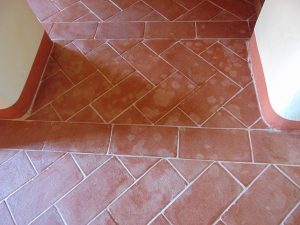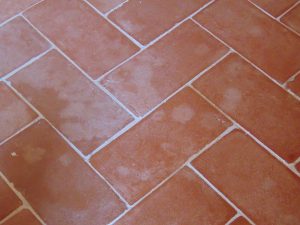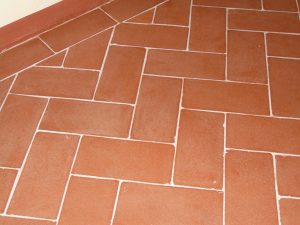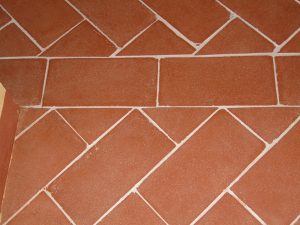Recovery of an internal cotto floor: dewaxing and treatment
14 May 2024
Today we are in Tuscany to talk about the recovery of a ruined internal cotto floor. The artisans of the company Punto Service have carried out a dewaxing and restoration of a civil house in cotto now degraded with Marbec products, committing themselves to return the floor its original beauty.
What is the cotto floor
Cotto is a ceramic material mainly used for floors and walls. It is obtained by cooking raw clay at high temperatures, usually around 900-1000 C. During the firing process, the clay undergoes a chemical transformation that gives the material greater strength and durability.
Among the distinctive features of the cotto are its warm and natural color, often varying from shades of red to lighter shades, and the presence of small superficial imperfections that add charm and character to the material.
Cotto is widely used in both indoor and outdoor construction, thanks to its ability to create a cozy and rustic environment. It is particularly common in the Mediterranean regions, such as Tuscany, Sicily and Spain, where its traditional appearance blends perfectly with the local architecture.
One of the distinctive features of cotto is its porosity, which can make the material susceptible to stains and damage caused by moisture. Therefore, it is important to adequately protect the cotto with specific treatments and proper maintenance to preserve their beauty and durability over time.
How to treat the spoiled terracotta floor
Cotto, with its intrinsic beauty and rustic character, has always been a popular material for floors. However, when it is not adequately protected and cared for, it may show obvious signs of degradation over time. This is exactly what we found in a house in Pistoia, where the cotto floor had become a victim of time and wear.
The damaged terracotta floor had unaesthetic round halos of lighter colour, a symptom of the so-called “cotto smallpox”. This phenomenon is caused by moisture rising from the substrate and the lack of adequate protection. However, thanks to the targeted intervention and the use of Marbec products, the artisans of Punto Service have managed to radically transform the damaged cotto floor, restoring its original beauty.
Dewaxing washing of the cotto floor
The first crucial step was to eliminate the degraded treatment present on the cotto surface. To do this, they used the SGRISER de-greaser, a product specifically formulated to remove the old degraded treatment without damaging the underlying material.
Once the surface had been cleaned, it was essential to neutralise any chemical residues and balance the pH of the cotto. For this reason, the artisans used VIACEM, a 1:5 diluted acid detergent in water and with a perfectly dry surface (after 5-6 days), which ensured a thorough cleaning without compromising the integrity of the material.
Stain-resistant treatment of the cotto floor
After allowing the floor to dry for as long as necessary, they proceeded with the application of the stain-resistant product EXCEL PLUS. This treatment has been fundamental to protect the cotto from stains and external aggressions, ensuring durability.
To further improve the strength and shine of the floor, professionals opted for the PRIMAMANO NEUTRA resin-waxy emulsion. This treatment has contributed to enhancing the natural beauty of the cotto, giving it a bright and refined look.
Finally, to protect the floor from future wear and dirt, the IDROFIN MATT anti-wear protection has been applied. This product offers an effective barrier against daily wear, while maintaining the matte surface and natural effect.
The end result was surprising: the cotto floor was reborn, showing a beauty and a sheen that seemed lost. Thanks to the targeted intervention of the Punto Service artisans and the use of Marbec products, the floor has regained its shine, bringing a feeling of warmth and welcome to the home.

A glossy varnished teak parquet, heavily worn and scratched, was completely restored thanks to a meticulous refurbishment process. The final result is a floor that is once again bright, uniform, and protected, with a glossy finish that enhances the natural elegance of the wood and makes ongoing maintenance easier over time.

The artisan company PIPPOLO, specialized since 1991 in the treatment of stone materials in the Tuscany–Emilia region, carried out a restoration and enhancement of a terrazzo floor. The work included three main phases: a deep cleaning with SGRISER and a red pad to remove old treatments and incrustations; the hydrophobic protection with TON PLUS to prevent the absorption of liquids and revive the colors; and finally, the finishing with POLIFIN, a self-polishing metallized wax that provides brilliance and resistance to foot traffic. The result is a terrazzo floor that is renewed, luminous, and perfectly protected.





















